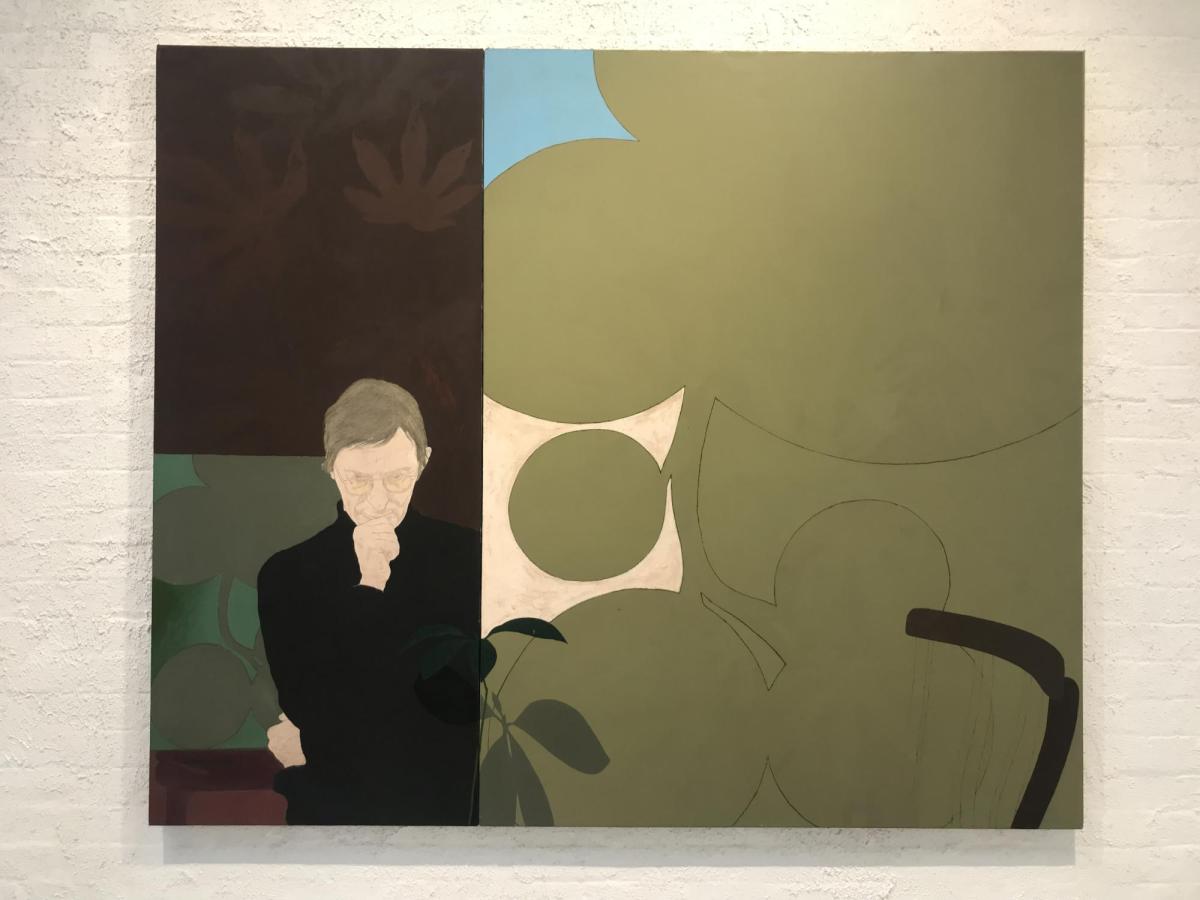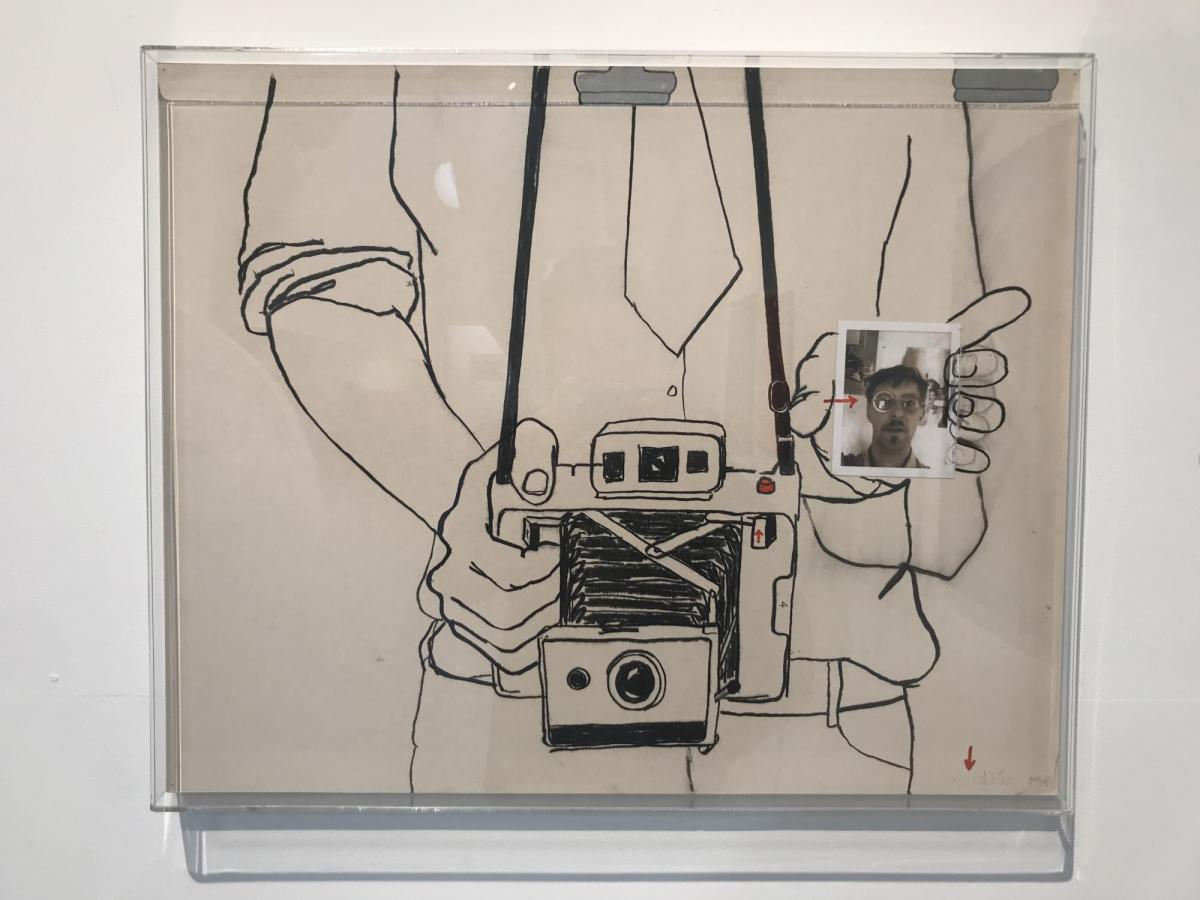‘Tony Woods was one of Australia’s most exciting young artists in the late 1960s,’ begins the book description of 2013’s Tony Woods: Archive, published four years before the artist died in June 2017. If you’ve never heard of Woods, you’re probably not alone, but if this book, and the exhibition currently showing at Collingwood’s Magma Galleries (his fourth posthumous solo show) is any indication, Woods was indeed one of Australia’s great artists – and one who has, for the moment, slipped under history’s radar. Magma’s immaculately presented exhibition aims to fix this.
Magma Gallery – whose owners also run Nura Gallery in southern Victoria’s picturesque Sorrento – is a feast for the eyes, its interior having been designed by Tomislav Kovac, Professor of Architecture at RMIT University. The sleek central structure that forms its mezzanine is an incredible example of how to take a relatively small space and make it immediately impressive. Woods’ work, as shown here, is impressive but strangely incohesive, but that’s precisely the point. He worked in many mediums and genres, and this exhibition aims to give a taste of all of them.
Woods was a multi-medium arist (watercolours, charcoal, film, polaroids, wood and skulls to name a few), and multi-genre (landscapes, geometric abstract, life drawing, minimalism, postmodernism and shades of 60s art nouveau among them). Although he was born in Hobart, he was called a ‘quintessential Melbourne artist’ by one of the interviewees in Work for the Eyes to Do, a 55-minute documentary that shows on the mezzanine level. During the 1960s, he gained sufficient fame to earn a Harkness Fellowship, taking him to New York in 1968. Unfortunately, the following year, he ‘met with a major personal artistic tragedy’, when his New York studio was destroyed by fire, along with all his fellowship’s art.
Knowing this gives Magma’s exhibition a feeling of “what if”, especially because Woods appears to have mastered every genre in which he dabbled. Particularly while looking through his 2013 book, it becomes evident that he was happy to jump from visual dialect to visual dialect, any style that he saw fit to express what he wanted to express at the time, and he produced astoundingly accomplished work in all of them.
However, this ability to jump from genre to genre ultimately worked against his gaining a “commercial” career, because it runs counter to the marketing notion of “branding” – when you see a work by American Keith Haring, or Australians Reg Mombassa, Sooj Mitton or Hayden Dewar, you instantly know it’s by those artists. With Woods’ art, this recognition is nigh impossible, because his extreme talent for artistic diversification, flexibility and learning new visual lexicons ironically became a burden in terms of gaining commercial success.

He was, of course, very aware of this, and discusses it in the documentary mentioned above. As Magma’s exhibition program states, ‘submission to popularist opportunity wasn’t part of his make-up’.
Magma’s exhibition showcases highlights of the genres in which Woods worked, giving an insight into a fearless, accomplished and unrestrained artist, unshackled by pressures or even notions of commercialism. His oeuvre is simply too diverse to sense a commercial agenda in it. The nicely unconventional Self Portrait with Polaroid does exactly what it intends to do and the deceptively simple diptych Jenny, the sci-fi-esque But What Does it Mean and the minimalistic Hangers all show an artist unafraid to try something new.
Artists often naturally diversify as they evolve, sometimes to the chagrin of their fanbase, as parodied in Regurgitator’s 1997 song ‘I Like Your Old Stuff Better Than Your New Stuff‘. Woods lost some old fans as he branched out into different subjects and mediums, which is a shame, because he produced quality work in each style he utilised.
It would probably be accurate to say that if he’d stayed within just one or two genres and became recognised for works in them, you’d see his art on postcards, mugs and T-shirts today, but Magma’s exhibition shows that Woods had no desire to work within the confines of a single medium or genre. And while this may have done him few financial favours, the vast artistic repertoire he created during his wildly prolific lifetime is a joy to discover.
Read: Theatre review: The Children, Heath Ledger Theatre, WA
If you’re after some artworks for investment, I predict that those of Woods will be highly prized in the future, as his life and works are discovered and rediscovered, appreciated and re-appreciated.
The art of Tony Woods will be exhibited at Magma Galleries until 15 September 2024.





